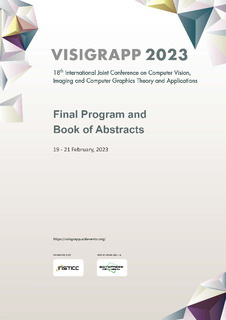| dc.description.abstract | There is an increasing need for underwater condition control for offshore steel platforms and wind and fish farming facilities. Localized diagnostic techniques, such as magnetic field non-destructive testing (NDT) methodologies for the structural monitoring of such facilities, are very important for detecting early signs of deterioration and damage, thus preventing fatal accidents. The visualization of such magnetic fields can define the parts that the diagnostic process will cover and lead to the detection of structural flaws. A proper visualization is of the essence for the better interpretation of data, informed decision making, and safety. The InVizAR project (accessible at: www.hcilab.no/invizar2022) is formulated to explore, design, and present a suitable visualization of NDT data from inspections of jacket platforms. Tiny cracks on the surface of the metal will generate invisible magnetic anomalies, and the objective of InVizAR is to visualize these signals. InVizAR utilizes augmented reality (AR) technology. AR can visualize invisible signals and their spatial and temporal qualities (4D), overlaying them atop the real-world view as layers while facilitating team collaboration in metaverse spaces. InVizAR utilizes a real-life dataset recorded in the ANDWIS project for the client OceanTech Innovation AS. The dataset contains geospatial and temporal values from an NDT probe on a jacket platform. The Unity game engine is used for AR development. Therefore, a new API structure is applied to the dataset based on the GeoJSON format for Unity-importing purposes. In the initial stages of concept design, potential visualization modes are identified based on the visualization’s spatial elements (location) and the data feed’s timing. Hence, it becomes clear that InVizAR facilitates a use case in which an administrator wants to communicate the probing results and their 4D qualities remotely to a client or co-worker. Simultaneously, AR is chosen as a long-term strategy so the work can be extended in the future and cover "on-location," contextual AR visualizations of such datasets. Based on a literature search and searches for commercial devices visualizing NDT results in 2D, a visualization heatmap is chosen. A heatmap is a powerful tool for visualizing multidimensional data, with which individual values can be expressed as colors. Subsequently, an AR heatmap visualization of the ANDWIS dataset is developed in Unity and is presented through a video recording. The heatmap visualizes frequency deviations, which signify cracks, in red. A slider is implemented to adjust the transparency of the AR visualization and another to navigate between visualizations of past datasets. Users can also tap on a point of the AR visualization and obtain information about measurements in this area. Through an internal peer-review process by the teams’ experts, the InVizAR AR heatmap is considered a suitable and user-friendly visualization that can serve current NDT use cases and the communication of their results in AR/metaverse spaces. Future work will create collaborative metaverse spaces for communicating and working on visualization, as well as address additional visualization modes. | en_US |
